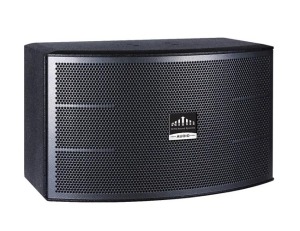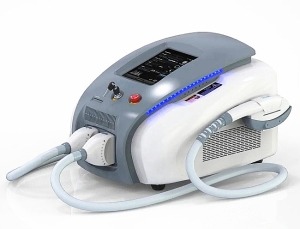Quantas baterias de lítio para alimentar um inversor de 5KW
Índice
- Quantas baterias de lítio para alimentar um inversor de 5KW
- Papel das baterias de lítio em sistemas de energia solar
- Como calcular o número de baterias de lítio necessárias
- Fatores que afetam o uso da bateria
- Configuração do banco de baterias para um inversor de 5KW
- Vantagens das baterias de lítio para sistemas solares
- Quantas baterias solares são necessárias para 12 horas de energia (inversor de 5000 W)?
- Conclusão
- Saiba mais sobre bateria

Papel das baterias de lítio em sistemas de energia solar
In a solar power setup, the lithium batteries act as the intermediary between the solar panels and the home’s electrical system. During the day, when the sun is shining, solar panels generate electricity, but energy demand is often higher in the evening when sunlight is no longer available. The batteries store the energy generated during the day for use at night. Lithium batteries are ideal for this purpose because they have a high energy density, meaning they can store more power in a smaller space compared to traditional lead-acid batteries.Como calcular o número de baterias de lítio necessárias
To determine how many lithium batteries are needed for a 5kw inverter, you must first understand the relationship between power (watts), voltage (volts), and current (amps). The power formula is: Watts = Volts × AmpèresPor exemplo, um inversor de 5.000 W funcionando em um sistema de 48 V requer cerca de 104 amperes (5.000 watts ÷ 48 volts = 104 amperes). Se você planeja operar o sistema continuamente por uma hora, precisará de baterias de lítio que possam fornecer pelo menos essa quantidade de corrente.Step 1: Determine the System's Voltage
Most 5kw inverters are designed to operate at 48V because this voltage is more efficient for larger power demands. A 48V system reduces the number of lithium batteries required compared to a 12V or 24V system.Etapa 2: Calcule os Amp-horas (Ah) necessários
Once you know the voltage, the next step is to calculate how many amp-hours (Ah) your batteries need to supply. This depends on how long you plan to run your system on battery power. For example, if you plan to run the inverter for four hours, the calculation would look like this:5.000 watts × 4 horas = 20.000 watts-hora 20.000 watts-hora ÷ 48 volts = 416,67 AhIsso significa que você precisaria de baterias de lítio que possam fornecer pelo menos 416,67 amperes-hora de capacidade para quatro horas de uso contínuo.Etapa 3: escolha o tamanho correto da bateria
Let’s assume you're using a 48v 200Ah lithium battery. To supply the required 416.67Ah, you would need at least three of these batteries. The formula for this is:Número total de baterias = Ah necessário ÷ Ah da bateriaIn this case: 416,67 Ah ÷ 200 Ah = 2,08 bateriasComo você não pode usar uma fração de bateria, você precisaria de pelo menos três baterias de lítio para atender à demanda do seu inversor de 5 kW por quatro horas.Fatores que afetam o uso da bateria
Several factors can influence how many lithium batteries you need. These include the inverter’s efficiency, the type of appliances you are powering, and the depth of discharge (DoD) of the batteries. Lithium batteries generally have a higher DoD compared to lead-acid batteries, meaning they can safely be discharged up to 80% of their total capacity without damage. This feature makes lithium batteries a more reliable and efficient choice for solar power systems.Eficiência do inversor
The inverter’s efficiency determines how much energy is lost during the conversion from DC (direct current) to AC (alternating current). A highly efficient inverter will require fewer batteries to store the same amount of energy.Demanda de energia do aparelho
If you are powering energy-hungry devices like refrigerators or air conditioners, you will need more lithium batteries than if you are powering lights and small electronics. Devices with high peak power demands, such as electric motors, can briefly require more power than their rated wattage during startup, so it’s important to account for this when calculating the number of batteries.Configuração do banco de baterias para um inversor de 5KW
When setting up a battery bank to power a 5kw solar inverter, it’s essential to understand how to arrange the lithium batteries to achieve the necessary system voltage and capacity. Most 5kw inverters operate on 48V systems, which means you’ll need to configure your battery bank to match this voltage.Conexões em série vs. paralelas
There are two primary ways to connect lithium batteries in a solar power system: series and parallel. The choice between these configurations depends on whether you need to increase the system’s voltage or capacity.- Ligação em série: Conectar baterias em série aumenta a tensão enquanto mantém a mesma capacidade (amperes-hora). Por exemplo, conectar quatro baterias de lítio de 12 V e 100 Ah em série resultará em um sistema de 48 V com capacidade de 100 Ah. Isso é ideal para um inversor de 48V como o modelo de 5kw.
- Conexão paralela: Conectar baterias em paralelo aumenta a capacidade (amperes-hora), mantendo a mesma tensão. Por exemplo, se você conectar quatroBaterias 48V 100Ahem paralelo, você terá um sistema de 48V com capacidade de 400Ah. Isso é útil quando você precisa estender o tempo de execução do seu sistema.
Vantagens das baterias de lítio para sistemas solares
Lithium batteries offer several advantages over traditional lead-acid batteries, making them the ideal choice for solar power systems, especially those using a 5000W inverter. Some key benefits include:- Maior densidade de energia: As baterias de lítio podem armazenar mais energia em um espaço menor, o que é fundamental quando o espaço é limitado.
- Vida útil mais longa: As baterias de lítio normalmente duram mais do que as baterias de chumbo-ácido, com alguns modelos capazes de durar até 10 anos ou mais com os devidos cuidados.
- Carregamento mais rápido: As baterias de lítio podem ser carregadas muito mais rapidamente do que as alternativas de chumbo-ácido, o que é benéfico para maximizar o uso da energia solar.
- Maior profundidade de descarga (DoD): As baterias de lítio podem descarregar com segurança até 80% da sua capacidade, enquanto as baterias de chumbo-ácido são limitadas a cerca de 50%, permitindo uma utilização mais eficiente da energia armazenada.
- Baixa manutenção: Ao contrário das baterias de chumbo-ácido, as baterias de lítio não requerem manutenção regular, como adicionar água ou limpar terminais.
Quantas baterias solares são necessárias para 12 horas de energia (inversor de 5000 W)?
The number of lithium batteries to supply a 5kw inverter depends on your energy usage and the duration you want the system to run on battery power alone. A basic calculation, as mentioned earlier, involves determining the total energy (in watt-hours) your system will consume, and then dividing that by the voltage and depth of discharge of your batteries.Exemplo de cálculo para uso estendido
If you need to power your system for 12 hours, and you estimate your home’s energy consumption is around 5000W per hour, the total energy requirement is:5.000 W × 12 horas = 60.000 watts-hora (Wh)Usando uma bateria de lítio de 48V 200Ah com 80% DoD, o número total de baterias necessárias é:- Converter watt-hora em amp-hora: 60.000Wh ÷ 48V = 1250Ah
- Conta para DoD: 1250 Ah ÷ 0,8 = 1562,5 Ah
- Determine o número de baterias: 1562,5Ah ÷ 200Ah por bateria = 7,81 baterias




















